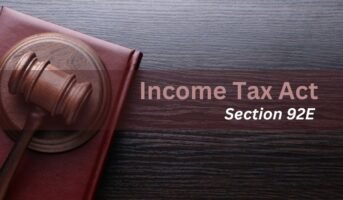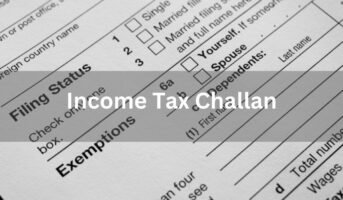Money received as life insurance is considered income. On this income, the beneficiary has to pay taxes. However, tax deductions are also provided under Section 10 (10D) of Income Tax (I-T) Act of 1961.
See also: Section 10(5) of Income Tax Act
Section 10(10D) of Income Tax Act
Section 10 (10D) contains regulations that are specific to tax deductions on claims such as maturity and death benefits, which include all kinds of bonuses from life insurance plans. All types of life insurance plans are eligible for tax deductions under this. The amount claimed is unlimited.
Section 10(10D) of Income Tax Act: How does it work?
Section 10 (10D) provides a significant advantage by granting tax exemption on both the death benefit paid to the nominee or legal heir of the policyholder and the maturity benefit received by the policyholder at the end of the policy term. This means that neither the proceeds from the life insurance policy’s death benefit nor the maturity benefit will be subject to taxation.
Section 10(10D) of Income Tax Act: Terms and conditions
Only after meeting the requirements outlined in Section 10(10D) can you benefit from tax deductions. Following are
- The premium paid for any given year throughout the plan’s duration may not exceed 20% of the sum assured for life insurance policies purchased between April 1, 2003, and March 31, 2012.
- The premium paid cannot exceed 10% of the amount assured for life insurance policies that were bought after April 1, 2012.
- Tax deductions for any claims, such as maturity benefits, life insurance, and rewards, are not allowed.
- The Keyman insurance plan’s death and maturity benefits aren’t excluded from income taxes under Section 10 of the IRS code (10D). Organisations or businesses can purchase a Keyman insurance plan to safeguard themselves against financial loss if an “important” employee of the firm passes away suddenly. The key man is a term for a key worker.
- The premium paid should not exceed 15% of the sum assured if the policyholder has a serious illness, is severely incapacitated, or if the policy was issued after April 1, 2013. Autism, mental retardation, and other disabilities are described in Section 80U, whereas diseases are mentioned in Section 80DDB.
Section 10(10D) of Income Tax Act: Eligibility criteria
In light of the aforementioned terms and circumstances, the following section will go over the requirements for claiming tax deductions under Section 10 (10D).
- All types of life insurance claim payouts are eligible for tax deductions under this clause.
- The maturity and death benefits of a life insurance policy, as well as any collected bonuses, are all eligible for tax deductions under this provision.
- The tax benefits available under Section 10 (10D) of the Income Tax Act have no maximum limit.
- Both Indian and foreign life insurance companies are subject to deductions.
Section 10 (10D) of Income Tax Act: Points to remember
- If the sum is not eligible for deductions under this section, any amount you receive from the life insurance plan you joined will be subject to tax Deducted at Source (TDS) at an interest rate of 2%.
- Additionally, no tax would be withheld at source from life insurance proceeds that are taxable under this section but do not exceed Rs. 1 lakh. The following criteria are used for applying tax withheld at source.
- If the PAN card is submitted, then a 2% tax will be deducted from the total amount.
- However, if the PAN Card has not been submitted,20% tax will be deducted from the total amount.
Section 10(10D) of Income Tax Act: Exclusions
Following are some of the exemptions listed in the Income Tax Act section 10(10D):
- The payout received by the Keyman Insurance Policy.
- Benefits that people obtain under Sections 80DDA(3) or 80DD(3) of the Internal Revenue Code of 1961 but which aren’t eligible for tax deductions under this section.
- Payment made under an insurance policy that was issued after April 1, 2012, and whose premium was greater than 10% of the amount ensured for the duration of the policy.
- Payment made for an insurance policy that was written between April 1, 2003, and March 31, 2012, and whose premium was higher than 20% of the amount guaranteed for the duration of the policy.
FAQs
Does Section 10 (10D) apply to ULIP?
Section 10(10D) of Income Tax Act will remain in effect as is. The amount received at partial withdrawal, surrender, or maturation is excluded under section 10 (10D) if the Sum Assured of any Life Insurance Policy is 10 times or more than the yearly premium.
What is the maximum limit of Section 10 (10D)?
The annual premium payment cap of Rs 2.5 lakh also applies in these circumstances. As a result, only plans whose total annual premium for all ULIPs is less than Rs 2.5 lakh are eligible for Section 10 (10D) benefits, according to this Section 10 (10D) change.
| Got any questions or point of view on our article? We would love to hear from you. Write to our Editor-in-Chief Jhumur Ghosh at [email protected] |
Saswat Kumar, a real estate writer, keeps up with the latest trends in residential real estate. He simplifies complex real estate jargon, making it accessible to all. Saswat’s data-driven analysis empowers buyers and investors to make informed choices in the housing market.











